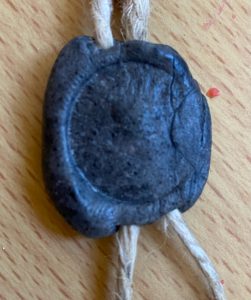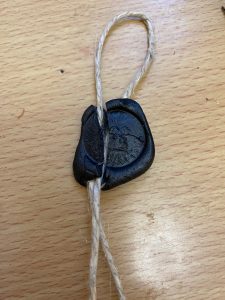My second attempt at making sealing wax was a qualified success. It was a usable product, if not exactly what I had been hoping for. The key ingredient that improved it was pine resin, so I decided to look for an even better resin that was still easily sourced and relatively inexpensive. After some research, I decided to try using damar resin. Damar is used for encaustic painting, and so it easily found from art suppliers. It has a higher melting point than pine resin, which I guessed would make it harder at room temperature.
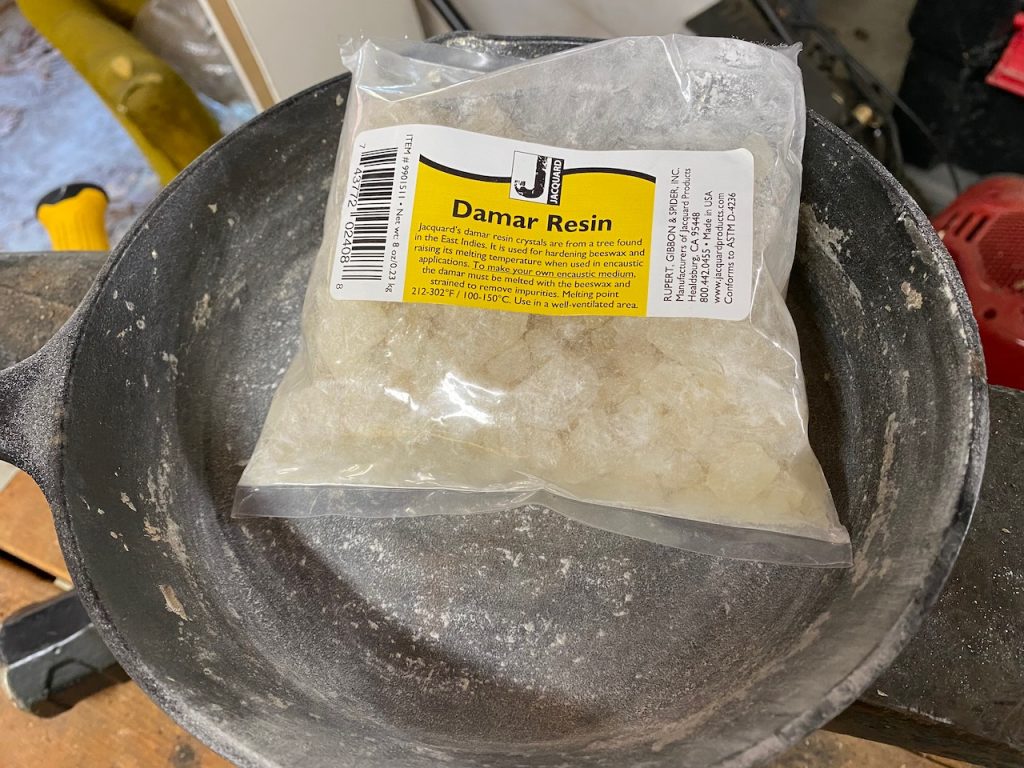
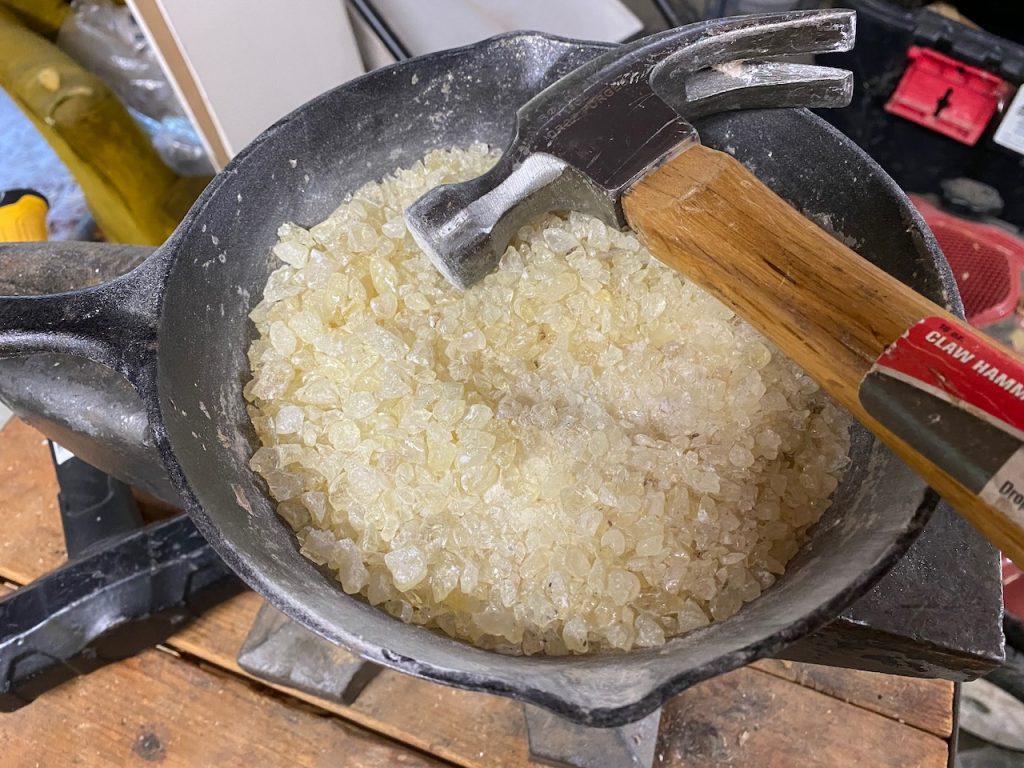
The damar resin crushed just as easily as the pine, and soon I was ready to start mixing up a new batch of wax. I started with a 2:1 ratio of wax to resin, melting the wax first as before and then adding the resin. I will note that damar does not have as strong an odor as either frankincense or pine, but melting it should probably be done with proper ventilation.



To make sure I could tell my two batches of wax apart, I decided to make this wax black. There are many instances of black wax visible in 16th century paintings of office scenes, and also I figured it would be appropriate for use on Meridian scrolls. Having no lampblack handy, I took some charcoal from the fire pit in my back yard and ran it through a coffee grinder I had bought at Goodwill. I sifted out the remaining chunks with a strainer and added it to the wax.



The resulting wax was gray and a little speckly, but definitely in the black range. It stretched when pulled apart, though it was still a bit grainy. It created an acceptable seal, if not quite as rigid as I would have liked.
I seemed to be on the right track, so I added another 75g of resin, bringing the total ratio to an even 1:1. I also added the rest of my powdered charcoal. I estimate the total amount to be about 1/4 cup.
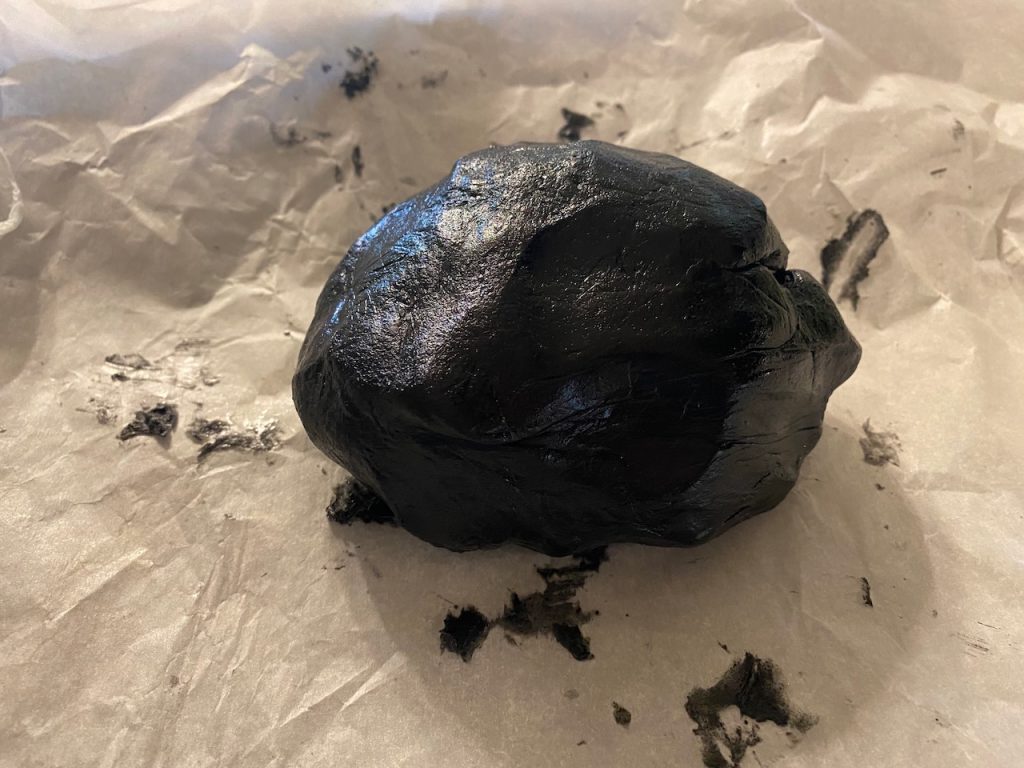
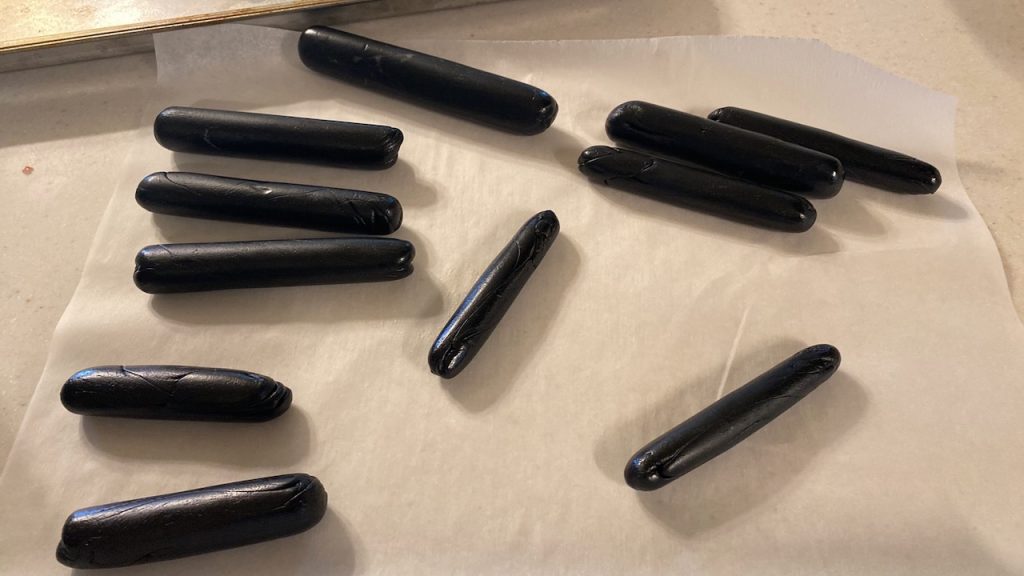
After these additions, the result was a smooth, shiny, evenly colored wax. It was quite hard at room temperature, while readily softening with the application of a candle flame. It stretched with a smooth ribbon and took good impressions both on a tag and applied to paper.


Most importantly, the resulting seal did not bend at all, but instead broke in half.
I think that at this point I have found a good recipe for sealing wax that is simple to make, affordable, and usable. I have some more experiments to do and new colorants to try, but for now I am happy with the current product.

